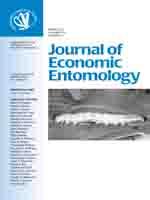Two types of honey bees, Apis mellifera L. (Hymenoptera: Apidae), bred for resistance to Varroa destructor Anderson & Trueman were evaluated for performance when used in migratory crop pollination. Colonies of Russian honey bees (RHB) and outcrossed bees with Varroa-sensitive hygiene (VSH) were managed without miticide treatments and compared with colonies of Italian honey bees that served as controls. Control colonies were managed as groups which either were treated twice each year against V. destructor (CT) or kept untreated (CU). Totals of 240 and 247 colonies were established initially for trials in 2008 and 2009, respectively. RHB and VSH colonies generally had adult and brood populations similar to those of the standard CT group regarding pollination requirements. For pollination of almonds [Prunus dulcis (Mill.) D.A.Webb] in February, percentages of colonies meeting the required six or more frames of adult bees were 57% (VSH), 56% (CT), 39% (RHB), and 34% (CU). RHB are known to have small colonies in early spring, but this can be overcome with appropriate feeding. For later pollination requirements in May to July, 94–100% of colonies in the four groups met pollination size requirements for apples (Malus domestica Borkh.), cranberries (Vaccinium macrocarpon Aiton), and lowbush blueberries (Vaccinium angustifolium Aiton). Infestations with V. destructor usually were lowest in CT colonies and tended to be lower in VSH colonies than in RHB and CU colonies. This study demonstrates that bees with the VSH trait and pure RHB offer alternatives for beekeepers to use for commercial crop pollination while reducing reliance on miticides. The high frequency of queen loss (only approximately one fourth of original queens survived each year) suggests that frequent requeening is necessary to maintain desired genetics.
How to translate text using browser tools
1 April 2012
Functionality of Varroa-Resistant Honey Bees (Hymenoptera: Apidae) when used in Migratory Beekeeping for Crop Pollination
Robert G. Danka,
Lilia I. de Guzman,
Thomas E. Rinderer,
H. Allen Sylvester,
Christine M. Wagener,
A. Lelania Bourgeois,
Jeffrey W. Harris,
José D. Villa
ACCESS THE FULL ARTICLE
It is not available for individual sale.
This article is only available to subscribers.
It is not available for individual sale.
It is not available for individual sale.

Journal of Economic Entomology
Vol. 105 • No. 2
April 2012
Vol. 105 • No. 2
April 2012
Apis mellifera
crop pollination
genetic resistance
migratory beekeeping
Varroa destructor




